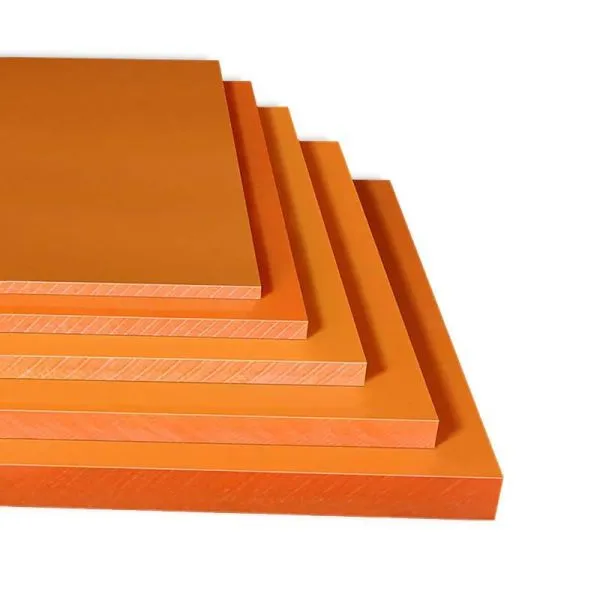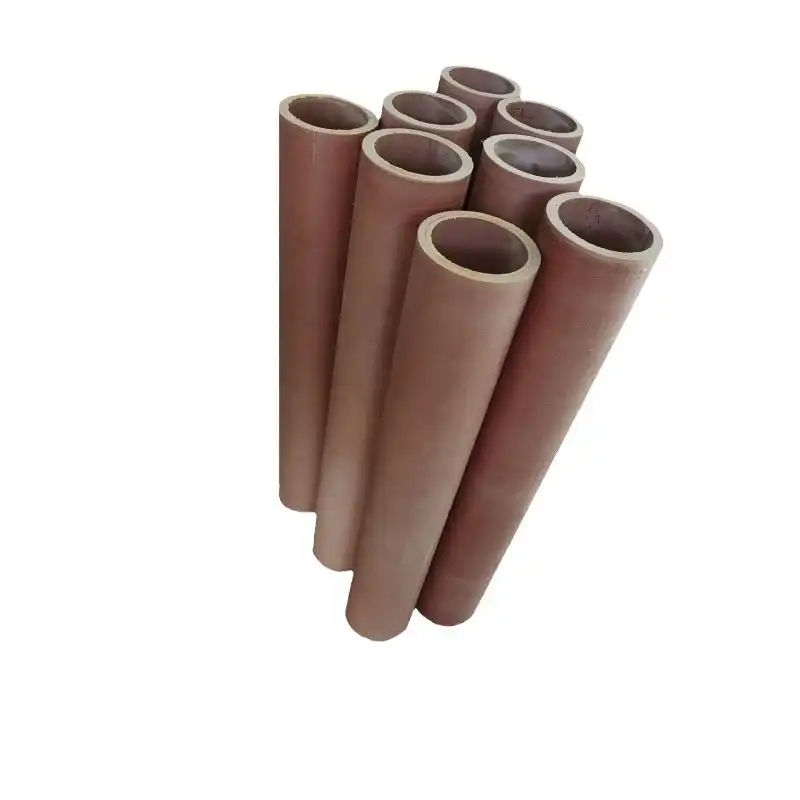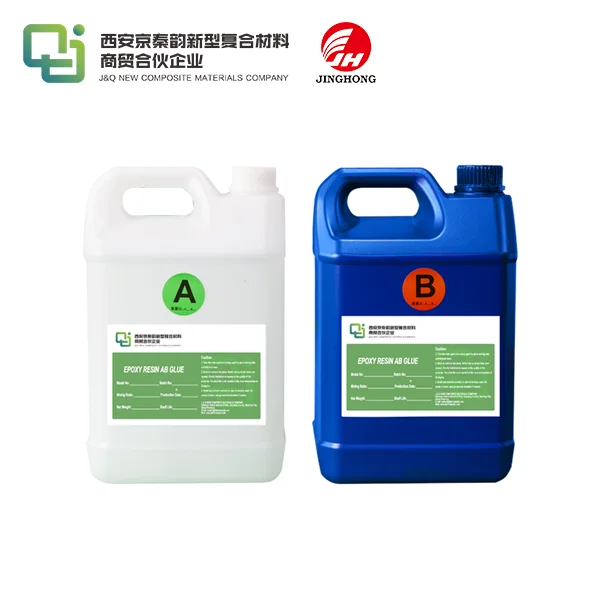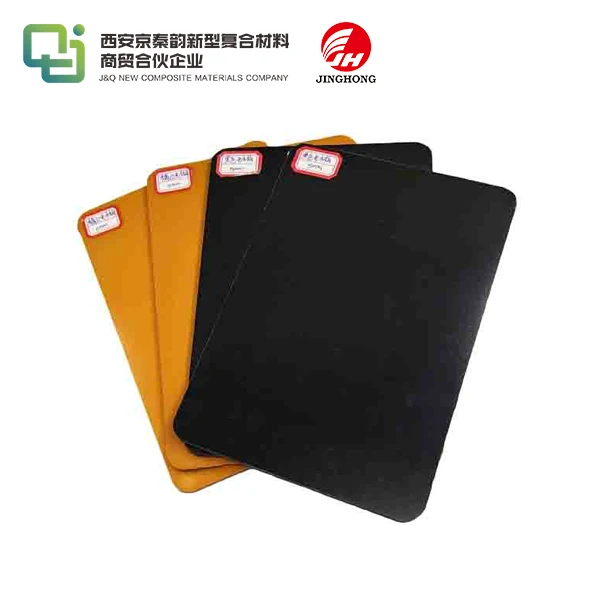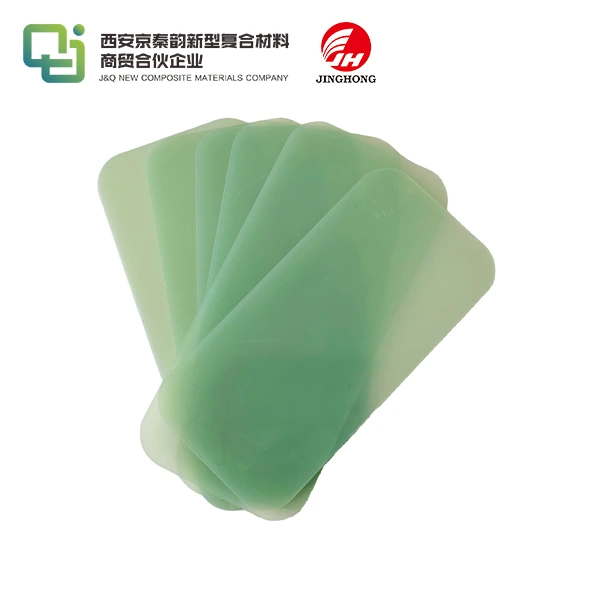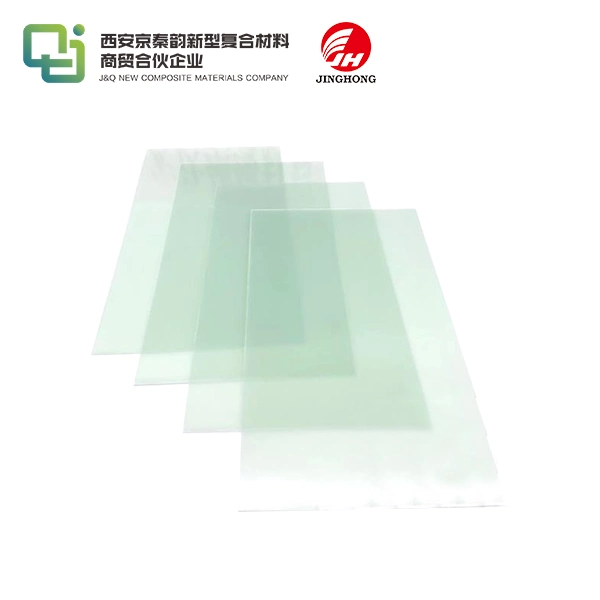What is Bakelite Sheet Made Of?
2025-04-21 16:49:34
Bakelite sheets are crafted from a blend of phenol and formaldehyde, forming a thermosetting plastic known as phenolic resin. This mixture is reinforced with fillers such as wood flour, cotton, or asbestos, depending on the desired properties, and then subjected to heat and pressure to create a rigid, durable material. The result is a robust insulating sheet prized for its electrical non-conductivity and heat resistance, making it a staple in various industrial applications. Curious to learn more about this fascinating material? Let's dive deeper into its makeup, uses, and advantages.
|
|
Basic Information: Brand: JingHong Materials: Phenolic Resin Nature Color: Black and Orange Thickness: 2mm --- 100mm Regular Size: 1040mm*2080mm Custom Size: 1220mm*2440mm Packaging: Regular packing, Protect by Pallet |
| Contact Us | |
Understanding the Composition of Bakelite Sheets
The Core Ingredients: Phenol and Formaldehyde
The foundation of a Bakelite sheet lies in its chemical backbone - phenol and formaldehyde. These two compounds undergo a reaction known as polycondensation, creating a hard, thermosetting resin. Phenol, derived from coal tar or petroleum, acts as the primary building block, while formaldehyde, a simple organic compound, serves as the cross-linking agent. This reaction produces a network of molecular chains that, once set, cannot be melted or reshaped, giving Bakelite its hallmark durability. Manufacturers carefully control this process to ensure the resulting material meets stringent quality standards, especially for insulation purposes.
Reinforcing Fillers: Enhancing Strength and Stability
To elevate the mechanical properties of Bakelite sheets, fillers are incorporated into the resin matrix. Wood flour, a fine powder made from wood, is commonly used to improve tensile strength and reduce brittleness. In some cases, cotton fibers or asbestos are added to enhance heat resistance and toughness, though asbestos use has diminished due to health concerns. These fillers not only bolster the material's structural integrity but also tailor its performance for specific applications, such as electrical insulation or mechanical components. The choice of filler depends on the intended use, ensuring the Bakelite sheet delivers optimal results.
The Role of Heat and Pressure in Production
The transformation of raw ingredients into a solid Bakelite sheet hinges on a meticulous manufacturing process. After mixing the resin and fillers, the blend is subjected to high heat and pressure in a mold. This step, known as curing, triggers the cross-linking of molecular chains, locking the material into its final, rigid form. The heat ensures the resin sets uniformly, while pressure eliminates air pockets, resulting in a dense, flawless sheet. This thermosetting nature distinguishes Bakelite from thermoplastics, as it retains its shape even under extreme conditions, making it ideal for demanding industrial environments.
Applications and Benefits of Bakelite Sheets
Industrial Uses: A Versatile Insulating Material
Bakelite sheets have earned their reputation as a go-to material in industries worldwide, thanks to their exceptional insulating properties. In the electrical sector, they are widely used to fabricate switchboards, circuit breakers, and transformer components, where their non-conductive nature prevents unwanted current flow. Beyond electronics, Bakelite sheets find applications in automotive parts, machinery, and even consumer goods, owing to their resistance to heat, chemicals, and wear. Manufacturers globally rely on this material to create components that withstand harsh conditions, ensuring safety and longevity in their products.
Advantages: Why Choose Bakelite Sheets?
What sets Bakelite sheets apart from other insulating materials? Their unique combination of attributes makes them a preferred choice. The material's dielectric strength ensures it can handle high voltages without breaking down, while its thermal stability allows it to endure elevated temperatures without deforming. Additionally, Bakelite sheets exhibit remarkable resistance to solvents, acids, and alkalis, making them suitable for corrosive environments. Their dimensional stability - meaning they don't warp or shrink over time - further enhances their appeal. For manufacturers seeking a reliable, cost-effective solution, Bakelite sheets offer unparalleled performance across a range of applications.
Environmental and Safety Considerations
While Bakelite sheets are celebrated for their durability, it's worth noting the environmental and safety aspects of their production and use. The thermosetting nature of Bakelite means it cannot be recycled like thermoplastics, posing challenges for waste management. However, advancements in manufacturing have led to more sustainable practices, such as reducing emissions during production. Historically, asbestos-filled Bakelite raised health concerns, but modern formulations prioritize safer alternatives like wood flour or synthetic fibers. For manufacturers, understanding these considerations ensures responsible use of Bakelite sheets, balancing performance with environmental stewardship.
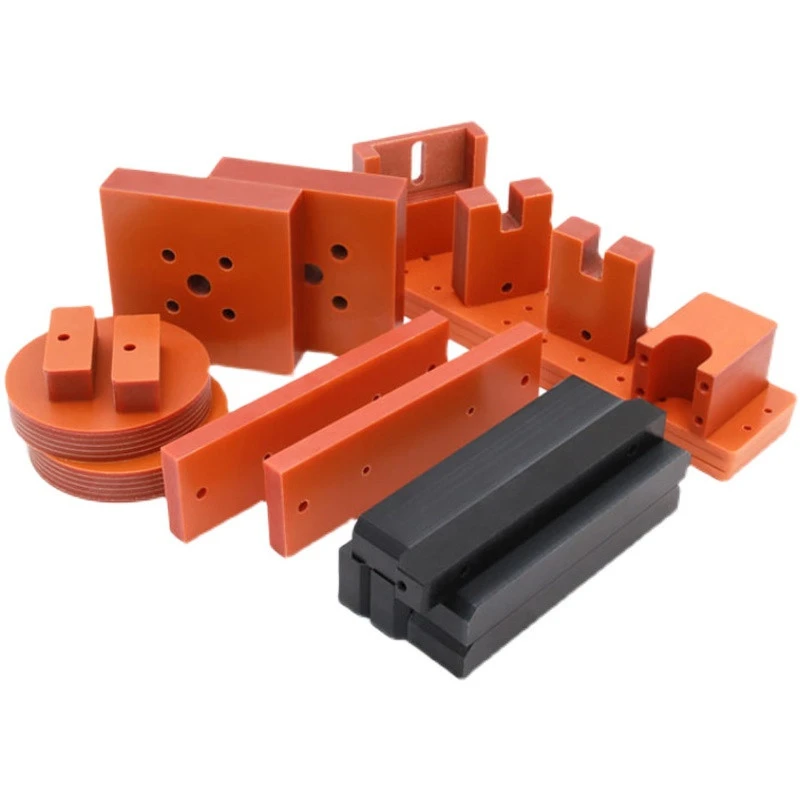
Choosing the Right Bakelite Sheet for Your Needs
Assessing Quality: What to Look For
Not all Bakelite sheets are created equal, and selecting the right one requires careful evaluation. High-quality sheets exhibit uniform texture, consistent thickness, and a smooth surface, free from cracks or voids. The dielectric strength, measured in volts per millimeter, is a critical parameter for electrical applications, while thermal resistance, often indicated by a heat deflection temperature, matters for high-temperature environments. Reputable manufacturers, like those with decades of experience, provide detailed specifications and certifications, ensuring their products meet international standards. Partnering with a trusted supplier guarantees you receive a Bakelite sheet that performs reliably in your specific application.
Customization Options: Tailoring to Your Specifications
One of the strengths of Bakelite sheets lies in their adaptability. Manufacturers can customize the material's properties by adjusting the type and proportion of fillers, the curing process, or even the sheet's dimensions. Need a sheet with enhanced flame retardancy? Opt for a formulation with specialized additives. Require a specific color or finish for aesthetic purposes? That's possible too. This flexibility allows Bakelite sheets to meet the diverse needs of global industries, from heavy-duty machinery to precision electronics. Working closely with a supplier ensures the final product aligns perfectly with your technical and operational requirements.
Partnering with Experts: Leveraging Experience
When sourcing Bakelite sheets, experience matters. Suppliers with over two decades of expertise in producing insulating materials, coupled with a decade of foreign trade, bring invaluable knowledge to the table. Such companies have honed their processes, built strong relationships with trading partners, and developed a deep understanding of global market needs. This expertise translates into superior products and services, from technical support to timely delivery. For manufacturers seeking a reliable partner, choosing a supplier with a proven track record ensures access to top-tier Bakelite sheets and comprehensive support throughout the procurement process.
Conclusion
Bakelite sheets, born from a blend of phenol, formaldehyde, and reinforcing fillers, stand as a testament to innovation in insulating materials. Their unique properties - dielectric strength, thermal stability, and chemical resistance - make them indispensable across industries, from electrical engineering to automotive manufacturing. While their thermosetting nature poses recycling challenges, modern production practices prioritize safety and sustainability. Whether you're seeking a robust insulating solution or exploring customization options, understanding the composition and benefits of Bakelite sheets empowers you to make informed decisions. Ready to harness the power of this remarkable material?
Contact Us
For more information about our high-quality Bakelite sheets and how they can benefit your specific application, please don't hesitate to contact our experienced team. We're here to provide expert guidance and solutions tailored to your needs. Reach out to us at info@jhd-material.com to discuss your requirements or to request a quote. Let's work together to find the perfect Bakelite solution for your project.
References
1. Baekeland, L. H. "The Synthesis, Constitution, and Uses of Bakelite." Journal of Industrial and Engineering Chemistry, 1909.
2. Kaufman, M. "The History and Development of Phenolic Resins." Plastics Engineering, 1963.
3. Smith, J. R. "Thermosetting Plastics: Properties and Applications." Materials Science Review, 1985.
4. Brown, T. E. "Electrical Insulation Materials: A Comprehensive Guide." Industrial Materials Journal, 1997.
5. Patel, R. K. "Advances in Phenolic Resin Composites." Polymer Technology Quarterly, 2008.
6. Lee, H. S. "Sustainable Practices in Thermoset Manufacturing." Environmental Engineering Digest, 2015.

